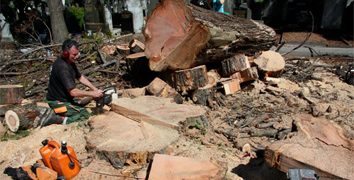Blooming Benefits: How Horticulture Nurtures the Environment
Horticulture plays a crucial role in nurturing and sustaining the environment, offering a myriad of benefits that extend far beyond the beauty of blooming flowers and lush greenery. The practice of horticulture encompasses the cultivation of plants, trees, and flowers with a focus on understanding and enhancing their growth, thus contributing to the overall health and balance of our ecosystems. One aspect that highlights the importance of horticulture is its role in mitigating the adverse effects of tree felling. As trees are felled for various reasons, such as urban development or resource extraction, horticulture steps in as a valuable tool to counterbalance this loss. By actively planting and caring for new trees and vegetation, horticulture helps to replenish the lost greenery, restore habitats, and preserve biodiversity.
Environmental Impact of Tree Felling
Trees play a crucial role in maintaining the delicate balance of our ecosystem. They help clean the air by absorbing carbon dioxide and releasing oxygen through photosynthesis. When trees are indiscriminately felled, this natural process is disrupted, leading to increased air pollution and reduced oxygen levels in the environment.
In addition to providing clean air, trees also help prevent soil erosion and maintain water quality. Their roots hold soil in place, reducing the risk of landslides and ensuring proper water drainage. Tree felling can result in destabilized soil and disrupted water cycles, negatively impacting the overall health of the environment.
Furthermore, trees are essential habitats for a variety of wildlife species. When www.spez-ag.ch are cut down, these animals lose their homes and sources of food. Deforestation due to tree felling contributes to the loss of biodiversity, disrupting the intricate web of life that sustains our planet.
Sustainable Practices for Tree Management
To uphold the delicate balance of our ecosystem, implementing sustainable practices for tree management is paramount. One such approach is selective logging, which involves carefully choosing which trees to fell, ensuring minimal disruption to the surrounding environment.
Another effective method is tree pruning, which involves the strategic removal of branches to improve tree health and aesthetics. This practice not only enhances the tree's overall well-being but also reduces the risk of disease and potential hazards caused by weak or dead branches.
Furthermore, tree transplantation is a sustainable solution that allows for the relocation of trees rather than their removal. By preserving mature trees and transplanting them to a new location, we can maintain the ecological benefits they provide to their surroundings.
Community Engagement in Tree Preservation
Horticulture plays a vital role in engaging communities in the preservation of trees. By raising awareness about the benefits of trees and the impact of tree felling on the environment, horticulturalists can mobilize individuals and groups to take action. Community engagement initiatives, such as tree planting campaigns and educational workshops, serve as effective tools in fostering a culture of tree preservation.
Through active participation in tree preservation efforts, communities not only improve the local environment but also create a sense of ownership and pride in their surroundings. By involving residents in tree care activities, such as pruning, mulching, and watering, horticulturalists empower individuals to contribute directly to the health and longevity of trees in their neighborhoods. This hands-on involvement fosters a deeper connection between people and nature, leading to greater appreciation and respect for the environment.
Furthermore, community engagement in tree preservation helps address broader environmental challenges, such as climate change and biodiversity loss. By collaboratively working towards preserving trees and green spaces, communities can mitigate the negative impacts of deforestation and urbanization. Through collective action and shared responsibility, horticulture inspires a sense of environmental stewardship that transcends individual efforts and contributes to the greater good of the planet.
